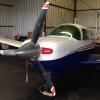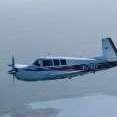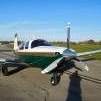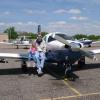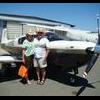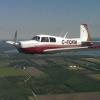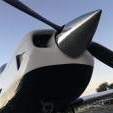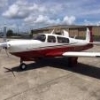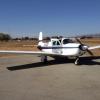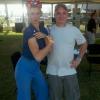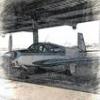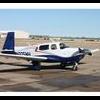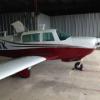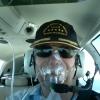Leaderboard
Popular Content
Showing content with the highest reputation on 11/21/2017 in all areas
-
Treat them as renters: they put down a refundable deposit they pay an hourly rate make sure you have a copy of their insurance policy (insurance savvy types can recommend how it should be written), don’t forget the LLC. come up with some online way of reserving the plane. at any time you can take the plane back, return their deposits, easy peasy.3 points
-
Today's trip to Bahamas. Great Harbour Cay - Big Whale Cay - Bimini. I didn't feel like editing tonight.3 points
-
She's up and running. Flying cross country tomorrow, about 750nm one way. Traffic is for peasants.2 points
-
2 points
-
Not to be negative but I would never join a partnership where the members did not have equal voting rights. Planes are cheap, it’s the maintenance, storage, and upgrades that eat you alive. Only way I’d join your “club” is if I just paid an hourly rate to help cover expenses. Otherwise the plane turns into a partnership plane, not your plane anymore.2 points
-
These were shown at the Mooney Summit and from what I recall were much less pricey than we expected.2 points
-
Last flight for this year's annual. 175 hours in the past 12 months, and that is with 4 months of downtime due to random MX, I probably could have eclipsed 250 if I wasn't grounded so long. A whole lot of laundry list is in the works for 44U, stay tuned as we start next week! Not a bad tailwind today at 6500! Laundry list for next week: Standard annual inspection Comply with reoccuring ADs Replace halogen wingtip nav lights with Whelen Chroma-series bulbs Install LASAR landing light lens Strip & recover wing walk Remove wheels and send for powdercoating Install new tubes & tires Reweigh airplane for new W&B (17 years old, GULP) Rebuild fuel selector Replace cowl flap handle Install basic clock (IFR) Replace ELT battery Change oil Change air filter Clean and ohm test plugs IFR recert I'd REALLY like to re-rig the airplane because if you let go, she will go into a 20 degree bank to the right after 10-15 seconds. I have to fly by resting my left hand on the yoke to hold straight and level. But I'm lost on how to go about doing this.2 points
-
Well I missed my one year anniversary of first flight, with the plane down for almost 2 months for final bodywork before sending to my painter in Tennessee. He now wants a couple long trips on it and then bring it down to him. My poor wife spent another period of me doing ridiculous hours trying to get it flying again. This is NOT a plane you want periods of time not flying. I was definitely not as comfortable today as I was when flying 20 hours a month. No flight photos but a few shots of the areas needing work after 165 hours of mostly pressurized flights at Mach ".53". The flap gap seals and NACA scoop servo controlled door are new "speed mods". Tom2 points
-
I hit send on my previous message before finishing the thought- but you read my mind! edit: the prize is I get to spend more money on fluid.... great. Hah!2 points
-
After three weeks of no flying due to weather and back breaking honey does to get ready for winter. Two full weekends of cutting fire wood and hand splitting it made me feel my age. But six loads in we should be warm for the winter Saturday we got to go for a real flight to Troutdale to see family. I heard Mooney 06W on frequency and had a fighter jet fly under me on his way to McCord. While we were at KTTD an A5 came in and got to talk to the pilot and get up close to it. It’s pretty cool looking. But she said it takes two fuel stops to get to Seattle from northern Cali I stick with the Mooney. Sent from my iPhone using Tapatalk2 points
-
Great investment. I leave mine on all the time. I can’t get a straight answer though to the life expectancy of it. Make your second upgrade to be shoulder harnesses if you don’t have them already. Sent from my iPhone using Tapatalk2 points
-
1 point
-
Totally different - can’t you see? One says 100ias and one says 130ias.... totally different products.1 point
-
Where do you see that? See page 3-13, it shows 2.1 nm per 1000' using that: (2.1nm * 6076 ft/nm)/1000 ft= 12.75 : 11 point
-
I got my upgraded 201 style yokes on EBay from Greeley, CO. I won bid at $75 bucks with shafts... Stole ‘em. There are deals to be had if you are patient. I powder-coated mine. Some day the plunge to the aero-comfort yokes will be taken. For now a tennis racket grip on the left pilot yoke for my sweaty summer paws...1 point
-
Yeah, agree. By the time the thing comes out, the G500-TXi will be near EOSL...1 point
-
I asked the folks at Mooney about the feasibility of installing shoulder harnesses in the rear seats of my M20D. They told me the short body Mooneys don't have the same steel frame in the back and there is nowhere to attach the shoulder harnesses.1 point
-
I'm pretty sure he's looking for 2 hours of dual to get his insurance. He mentioned his OTHER option is enough time in make and model himself to meet the insurance minimum, which he is working towards sans insurance is what I understood. Should be someone in the Chicago area that can help him. Another option is head straight north to KIMT and Bruce, our local CFII and Mooney owner, can get him his dual. Tom1 point
-
@xcrmckenna Not sure about the other places.... but, The 'key' numbers are printed in the PPP training manual (?) That is a handout when you take the PPP course. With a little thought process a Mooney pilot can generate a few on his own... Take the known power settings from the POH. Use the MP and rpm/100 added together.... know that 1” of MP can be subbed for 100 rpm Two sets of key numbers that get used often are 65% and 75% BHP... Rough example: If your POH says 65% bhp is 20” and 2600 rpm... 65% bhp can be found at a key number of 46. And can be estimated to work for other pairs like 21”, 2500 and 22”, 2400 And 23”, 2300 etc... That is as good as I can get working from a fuzzy old memory... verify you numbers against your POH... it should make sense. If it doesn't, don't use this method alone... The PPP is a great training and weekend event if you get the chance... PP thoughts only, from old memories, not a CFI... Best regards, -a-1 point
-
Well there are the boys at fed ex driving those TKS caravan's that say they use a drum or two. And the Canadian mounties air patrol. But Mooneyspace - I think you win the tks prize. I'm good for 15gal a year - maybe 20 incl the summer time purging. I should be buying 30 gal drums eh?1 point
-
1 point
-
I wonder if there are enough tks users close to me at KSAC...say Petaluma/Santa Rosa/Bay Area to split a 55 or 30 gal barrel...I have a couple empty 5 gal tks containers...so 10 gal would work for me..1 point
-
I was (not) lucky with this. My 5 kids decided to follow their mom’s path and did not like going to school. It did not cost much in tuition but I am paying back now having to co-sign mortgages. Yves1 point
-
1 point
-
And, when installed as an HSI, the G5 can do double duty as a backup AI. If your primary AI fails in flight, you can change the HSI into a battery backed up AI.1 point
-
I use Garmin Pilot. The downloads are automatic to a smart phone and tablet. When I start the engine and turn on the GTN the latest navdata, charts automatically load from the smart phone via the FS 510. Sweet.1 point
-
If you are talking about instrument approaches, my rule of thumb is to be below gear speed before I hit the first fix (or transition fix) on the approach. That would be 2300 RPM/20" which will give you about 120-125 KIAS or so. I like to be below flap speed prior to the FAF. For me that's about 2300 RPM/15" which will give me about 100-105 KIAS. Keep in mind that you may need the gear down well before the FAF depending on the approach. There are MANY approaches with step down fixes prior to the FAF that require significant descent angles. If you try to do that gear up, you may need idle power (and the gear horn) to stay below gear speed. If you keep the gear horn off (recommended so you don't get used to it) you'll need 13-15" of MP and the airplane will accelerate to above gear speed. A rule of thumb I use is 200'/NM. If I divide the altitude loss required by the distance between fixes and I get more than 200'/NM, I'll need the gear down to make the descent and stay below 130 KIAS. I start at the FAF and work backward. I find the first segment that will allow me to easily make the descent gradient without gear. Then when I'm flying the approach, I'll put the gear down prior to the next segment. Everyone is different, but I've started flying my final (after the FAF) with gear down and flaps up and speed or 75-90 KIAS. That way if I have to go around I won't have any pitch change from the flaps coming up. If I break out at 200', I can go idle, select full flaps, be on speed, and spooled up prior to landing. And if you find yourself too high and fast to lower the gear, do what we did in the DC9; slow down to go down. Level off, power back, dirty up (gear and maybe even full flaps), then descend about 10 knots below the limiting speed. If that won't do it, just plan on going missed.1 point
-
you can remove the latch side of the buckle from the seat and reinstall it backwards so that the latch lifts toward the seat rather than out.... If both seat belts are done this way, the center area is free and clear and you don't hit anything... Of course, that doesn't change my waiving my arm around and pushing passenger feet, jackets and whatever else out of the way before swinging gear. Generally, you're going to get flying elbows and scolded if you sit to close to me right before GUMPS! my regular pax know to get the hell out of the way when reaching TPA... My dad still hasn't gotten it through his head though...1 point
-
Thank you for the warm welcome. I am the owner of Av-Mech LLC, a full service GA maintenance facility located in Leesburg FL. I have been close friends with the Owner of Airflow Systems for many years. The time has come where the owner has decided to retire and he and I have been looking at ways to bring back his STC with a new owner. That would be me. The original manufacturer of the Airflow Systems STC sold them for a while and did very well with his kit. He is more of a developer than a sales guy and so he eventually got busy designing other products. He did not continue to market the system and so interest was low and sales slumped. During his peak with the STC, Aviation Consumer magazine rated the Airflow Systems STC the best Intercooler kit for the Mooney 231. It provides better demonstrated performance than the Turbo Plus STC and it installs much quicker with no paint work required. My intention is to bring the STC back on the market following some basic market surveys. I need to determine if there is actually a desire and if those who desire are truly willing to buy. It is quite expensive to get this back on the market and like any business I need to establish wether my investment is likely to provide and ROI. The kit today will be brought out at a lower price than Turbo Plus and the cost for install is much lower.1 point
-
Alright, guys. Sorry it took so long but we finally fixed the problem We first balanced the prop. It was at 0.5 IPS and we got it down to 0.02 IPS which made a big difference in the ride but did not fix the issue I also had a small static leak of 250 ft/min. This was fixed but did not correct the problem Finally we replaced shock mounts which did the trick. A few confounding factors, but finally got to the bottom of it. Thanks for all your help.1 point
-
Yes, I am aware of the "ignore user" feature...I have resisted using it because sometimes it's amusing to see what the trolls have to say. My skin is tough enough to laugh off our Aussie friend. To answer one of his questions, though...I have NO expertise with the ATC system, which is exactly why I'm trying to study it more! But moving on... I have now read and analyzed the latest salvo directly from Bill Shuster, as well as the actual document provided by the Trump administration laying out their preferred approach. And about a dozen other articles that were published in various forums, mostly just using those two sources for citation. I also have read two different studies -- one from Embry Riddle, and one from MITRE -- that analyzed the "privatized" versions of ATC in place in Western countries and tried to show if there is any benefit or harm. (The differ in their conclusions.) But the latest thing I've read just came out by AvWeb this morning, which I thought was a rational analysis by someone on the inside. I don't know if anyone else here cares about this but I'll post it anyway just in case...this is copyright AvWeb: Why Privatizing ATC Would Break The System By James Van Laak | November 19, 2017 One of the most important conversations going on in aviation today has to do with the proposal to remove the air traffic control organization from the FAA and turn it into a privatized entity. Proponents claim that this would free the function from the bureaucracy and petty budgetary pressures of the FAA and lead to more efficient operations. They also claim that it would result in more rapid modernization of the air traffic control system. Opponents to the privatization proposal base most of their arguments on three points. First, they point out that air traffic control function is working well today, and that there is no reason to fix something that is not broken. Second, they claim that moving to a privatized system will inevitably lead to a user-fee system dominated by the airlines, which would penalize the general aviation sector. Third, they point out that this entity would have a monopoly control of the air traffic control system with minimal oversight by the government, a recipe for corruption and gross mismanagement. As a pilot with over 47 years of experience operating under the FAA’s authority and five years as a senior executive at the agency, I have a strong opinion about these issues. In summary, I find the privatization arguments to be weak and driven by political dogma, and the arguments against completely valid. But beyond my traditional aviation credentials, I am also an expert in the design and operation of complex systems. This leads to a different and, in my view, more important conclusion about the issue based not on whom the controllers work for, but how the system works. Air transportation as we know it today is a complex system that requires many different elements to work together well, not just ATC. Obviously air traffic control is a critical piece of that system, but it is neither the only one nor even the most important. Other elements are required to ensure that the flying public is safely transported to their destinations. These include: Pilot training, certification, regulation and enforcement Airport design, construction and operation Aircraft design, construction and operation Aircraft maintenance and modification regulation and oversight Avionics and navigation systems design, certification, maintenance and oversight Air traffic procedures, including airspace design and special-use airspace management Weather information dissemination and air traffic avoidance procedures And many more Our safe and effective air transportation system works as well as it does because all of these elements are predominantly under the control of one agency that can make them work together. Airmen are trained and overseen to make sure that safe operating practices are followed. Flight standards inspectors ensure that the navigational and airport systems comply with established standards. Aircraft are designed and maintained to be safe. Aircraft navigation systems meet the requirements of the air traffic control system so that both know what to expect from each other, across countless combinations of ground, air, airspace and weather conditions. This integration would not be as effective if the many functions belonged to different organizations even within the government. Pulling a critical piece out of the government to create a new and far more contentious barrier to coordination would be damaging and would certainly result in more near misses and more. It is true that some countries have implemented a privatized air traffic control function, but their ability to do so benefits from American leadership of the overall aviation system. FAA regulations, standards and processes form the foundation for most of the world and thereby hold the system together. All pilots know that the FAA has problems in the way it does its job, so it is fair to ask how many of these might honestly be made better by moving air traffic to a privatized organization. By my count, damn few. If perchance some improvement was found in one or two functions, it would be far outweighed by the breakage caused when air traffic was separated from the world air transportation system as a whole. This leads to the most important conclusion of all: Air traffic control should not be privatized because doing so would gravely weaken the safety and effectiveness of the premier air transportation system on the planet. James Van Laak is a former Deputy Associate Administrator for Commercial Space Transportation at the FAA. He served in the U.S. Air Force as a F-106 and A-10 pilot and worked at DARPA and at NASA as a manager on the International Space Station. --- I'm coming to the same general conclusion. I don't think anyone can claim that the current system is perfect, but there is room for improvement around the margins that don't require a wholesale replacement such as what is proposed. I am assembling the facts in my head to support this assertion, so if I get the time and energy I'll put it all together.1 point
-
All good except for electric gear. Bo Ow. Lac Bena. Melo Boo. (three different languages to express the idea of "not needed") Not even close. ...Sorry... could not help it. I love my manual J bar....1 point
-
On the home page of the site I posted earlier, there’s a $50 coupon to use with your first 55-gal drum...bringing the total to $574. Comes out to $10.44 per gallon. Not bad...1 point
-
They could have been re sealed, and looking back I would have re sealed them for the savings. But I went with new so that it would be a quick, and "new" part replacement. I also done it myself. Overhauls especially unexpected sure do break your heart. I seriously lost some sleep and worried a lot. So don't stress over the small stuff, from what I've seen on Facebook your bird is in good hands1 point
-
go to one of the Atlanta airports like KRYY or KPDK. You'll find your $5-6/gal fuel.1 point
-
Wow, I'd be more worried about the belly panels getting rolled over and creased by the creeper than finding corrosion. Don't they have panel racks? moving blankets work well too. Looks like you'll have a good machine soon!! -Matt1 point
-
More logic... 0) Partially stalled wing conditions don't seem to be well defined 1) The configurations in our POH are limited to the ones used/promoted in our POH... 2) Some caution comes to mind... things that cause disruption of airflow above and below the wing disrupt the lift in that area of the wing. Landing configuration is throttle out, flaps down, gear down... Not mentioning speed brakes... is kind of like ignoring the gear... Speed brakes and gear cause localized airflow challenges. Losing that percentage of lift will increase descent rate... or raise the AOA. But not itself generate a full stalled condition. kind of like the stall devices (name please, fences?) on the leading edges... Wing design/construction changes specific parts of the wing to begin stalling first. 3) another thing left out of the conversation is the AOA... 4) Since The Stall begins near the root of the wing, an additional percentage of the wing's lift is being lost at milder AOAs... 5) There is definitely an Airspeed or AOA that makes the whole wing liftless.... 6) Where There is some danger not discussed very much... on the go-around... Landing configuration, prepped for go around. Full Power is added in, quickly in most cases. Nose tries to head skyward, if not actively controlled. this configuration and power setting doesn't seem to make the chart... 7) What's the Stall speed of full power in the landing configuration? 8) the AOA on final approach and AOA on the go around seem pretty different to me... 9) charted Power On stalls seem to only be expected in the climb configurations. 10) charted Power off Stall seem to only be expected in the landing configuration. This sounds like @201er's AOAi promotion threads... So much benefit, so little additional cost, when completing a panel make-over. Thanks to jl for the additional legal eyes reading insight. Our thin wing has an interesting span of working AOA. The line where the airflow splits to go over or under the wing doesn't have as much room to move as other wings. words like burbling and airflow separation get used.... So.... Now approaching full circle.... Setting The AOAi based on Stall speeds has to take into account... calibrated air speed actual instrument error actual configuration combinations used actual Wing construction and options actual wing condition, including all damage, paint issues, leading edge tape, bird crap and paint scratches... Speed brakes, fiki system, retreads or good year FCIIs.... yet, not get too complex to make it unusable... Calibrating It seems to be a piece of cake compared to discussing these tiny details... Testing its calibration at altitude seams to be the prudent catch-all method for all the variations listed here. Comparing the actual AOAi performance to the ASI and charted data, gains experience over many flights and weather conditions.... These important last steps seem to be done in kias... PP thoughts only not an instrument guru. Our @CYA guy could probably give some good insight on this topic...? Best regards, -a-1 point
-
Perfect flying weather for a hop to WLW been having some problems with our com 1 Narco 12d on the transmission being very garbled seems intermittent will have to look into it. Otherwise a very nice flight with not a single bump. Return with 100 pounds of groceries full fuel and 3 on board giving us 700fpm at 120mph.1 point
-
It is not a loss at all , unless you think you are flying a plane for FREE , doesn't work that way....... You buy a machine , you upgrade it , you use it , you sell it .....The difference between the buy and sell price , is the cost of use..... When you buy a new car , drive it for 6 years , and sell it , did you lose money ?????? No you paid for the use of a car....... Unless you are in the airplane business ( I am ) , you shouldn't think that way , or you can buy a piece of shit plane , fly it with shitty equipment , and not be able to sell it , because every other plane has better equipment ...... Also you are not taking into account , that the plane with the upgrades will ACTUALLY sel ........1 point
-
For how cold at that altitude and not have any shrinkage. The Navy should be impressed.1 point
-
I'm still not quite sure why college tuition for kids comes into play... My kids knew that if they were going to college they better get good grades in high school and test scores to receive scholarships. If not then they were going to learn how to be a poor college student and work their way through school. I haven't added up my costs through my first year (11 months) of ownership. Here are the rough ones: Loan - $233/mo Hangar - $400/mo (Like others I consider this a necessity) Insurance - $1525 (I had zero complex/retract hours, under 60 total hours, renewal after passing 200 total and 140+ in type came back at $1005) Fuel - $6,300 (Approximate, I haven't catagorized everything in Quicken yet but that would be 140 hours, 10 gal/hr, and $4.50/gal) Shoulder Belts - $1,000 (Some might consider it optional but I considered this a necessity. I did the install and I think paid my AP/IA $20 to look it over and sign it off.) Oil changes - $240 (Approximate, $20 filter plus oil, I did them myself, three oil changes) 500 hr Mag Inspection - $1375 (They were at about 430 hours when I bought it) Misc - $2000? I have not kept track of little things here and there on the plane That puts me right about $20,000 and does not include the first annual that is due next month To that you can add in some other stuff that was completely optional. I just had an EDM830 installed this week and I have a used SL40 going in next week to replace the Narco Escort II that was my #2 Nav/Com. I just fly VFR but plan on putting in a GPS/Nav/Com next year and starting on my IFR which will add to the bill. Contrary to some advice I bought the plane even though I could not have afforded to pay cash for it, nor pay cash to put an engine in it. I could if necessary do that using a home equity line of credit if needed. I looked at my finances and decided that I could afford $1,500 or so a month to chase down the dream of flying so I did it. I can't put a price on the memories and experiences that we have had since owning the plane, which I guess is why I don't really keep track of expenses to the penny. I am blessed to have a wife that not only enjoys the plane but encouraged me to get it. She also has never had any concerns about upgrades if it is to make things either safer or more enjoyable. She just flew commercial to UT to visit grandkids this week and was really wishing she was in our plane instead of wasting time in the terminal and then getting crammed into a seat next to whoever. It cracks me up when people say our planes are cramped inside, there is more room than flying coach class, even in the back seat of a short body...1 point
-
1 point
-
I don't want to see you in a CTLS either! But I don't want to see you be one of those guys who buy a plane and then can't afford to operate it. We have seen a few of them over the years on this site. I am a 26 year owner of the same plane and have kept detailed spreadsheets since Day 1 (ah, what happened to those days when AvGas was $1.25 per gallon?). I fly between 120 to 180 hours a year. On a good year, nothing breaks and I am on the lower side of the $20k range. On a bad year, I'm paying $1,500 for new spark plugs and a wiring harness, spending money to fix a radio problem or an annual that is double my normal expected cost. The upgrades and engine reserves I keep can be eliminated if you have plans on selling before either is needed. If you plan on owning the plane for a while, you really should factor them in. People often asked me how I funded my avionics upgrades -- simple, I budgeted for it by setting aside money for every hour I flew. My first upgrade after I did the autopilot in 1998 was in 2012 when I joined the world of GPS and glass cockpits. I saved for 14 years to have the funds to make that happen. If you can do some of the maintenance yourself (as I did for the first 7 years of ownership) and can do owner assisted annuals like raptor above can, you will lower your costs. If you are 5 thumbs and have a hard time with "lefty loosey, righty tighty", you will need to pay for someone to do those things for you. I wouldn't sugarcoat the costs. Keep in mind that a number of owners here are, er, ah, on the dinosaur side of evolution (myself included) and have worked for years to have the financials means to own a plane. When I bought my Mooney, I was making less than I pay today in taxes. So, it can be done but you need to go into it with your spidey senses on full alert.1 point
-
1 point
-
What @Raptor05121 said. You're always money ahead buying the plane you want rather than one to upgrade. I don't budget for engine/overhaul. I budgeted for a plane that I could afford to pay cash and afford an engine when it's required. It might still make sense to finance, but I wouldn't finance because it was out of reach otherwise. I started with a C and after two years and 400 hours, I'd learned two things. First, I was definitely using the plane. 200 hours per year of almost all cross country flying is perfect for a Mooney. Second I realized I could afford a bit more than the C. So I sold it an bought a 252. Then I did get a little carried away with the panel, but didn't pay retail for any of it and haven't missed a mortgage payment or bounced a check, and we've still got Ramen noodles in the pantry, so I think we'll make it.1 point
-
1 point
-
1 point
-
Mike Busch has a webinar discussing this The upshot: Very low oil consumption (20 hours/qt) MIGHT be a sign not enough oil is getting to the cylinders. Very high oil consumption (1 hour/qt) MIGHT be time to check the cylinders. Anything in between PROBABLY is perfectly fine.1 point
-
I use a quart every 5-10 hours, depends on the kind of flying. Anything over 6-6.5 qts gets blown out usually fill it when it gets below 6.1 point
-
hmmm....I must be simple and dumb....I pull back to 75% power from full power climb (after leveling off), close the cowl flaps, dial the prop rpm to 2500 and pull the red knob....set the JPI for LOP and start twisting the knob til all 6 jugs are registering on the lean side...add back MP to 30 inches and set the A/P...enjoy the scenery and monitor the temps1 point


